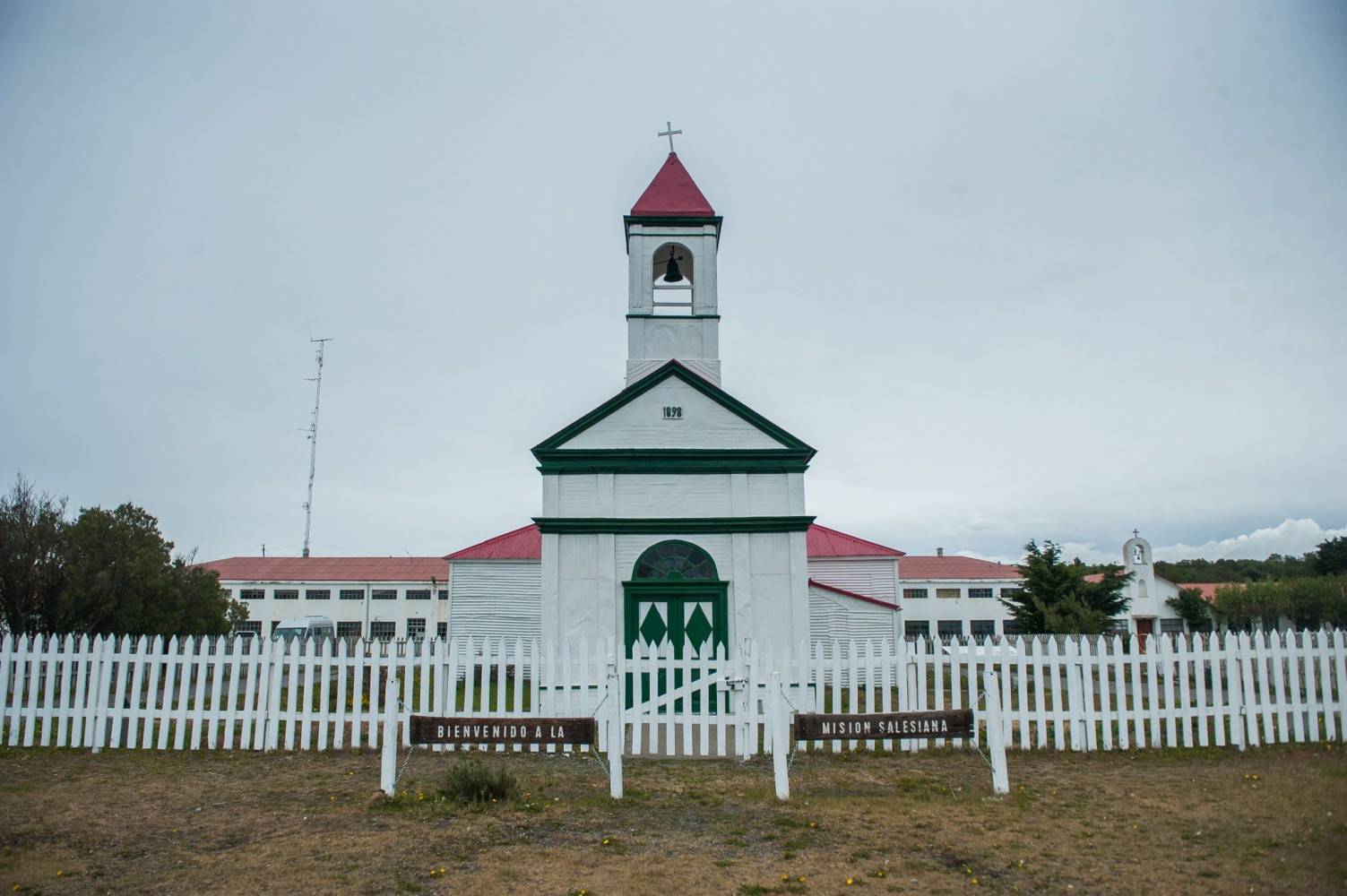The city of Río Grande is located on the north coast of the province of Tierra del Fuego, Antarctica and the South Atlantic Islands.
With a population of more than 100,000 inhabitants, it is the urban nucleus with the highest demographic density on the island.
The city is also connected by a modern International Airport through daily and regular flights with the main destinations.
A place of privileged skies, with pink sunrises and orange twilights, it is characterized by having a cold and windy climate.
The local economy is based on industrial, commercial, oil and livestock activities. In addition, the self-entrepreneurship of the residents complements the economic engine of the city.

The steppe landscape, transitional forests, sea and river surround the city. Recognized as “the International Capital of Trout”, it is appreciated by fans of sport fishing due to the high quality and number of trout that inhabit its river.

Cabo San Pablo
The road to Cabo San Pablo, takes us to an adventurous past protected by the myth of Terra Australis Incógnita. This unknown area, through which expeditionaries from all over the world ventured, was a place of countless shipwrecks. The beliefs of monsters and evil beings tremendously impressed those left on land, and gave highly valid arguments to seasoned sailors, who sought funding for their expeditions.
80 km south of Río Grande along National Route 3, is the junction of complementary route “A” and entering 40 km towards the sea, you reach Cape San Pablo. This route winds through picturesque estancias and offers us incredible landscapes of hills, lengas forests, rivers and cliffs that reach the sea, being also very common to find herds of sheep, guanacos, foxes and condors.
A particularity of the place is the river Ladrillero that flows here, but underground. After its meandering journey through the steppe, it reaches the beaches of the cape and melts into its sands to end up in the Atlantic Ocean. A path, with a parking area for cars and minibuses, takes you to the top of the cape, with lookouts that provide 360 ° panoramic views, interpretive signage and benches to relax. At the top is the old leaning lighthouse, and off its coast, the rusty hull of the ship “Desdemona” that ran aground there in the early 1980s, giving it a dose of End of the World mystery, and as a sample of the past. of shipwrecks and adventures, which occurred in the brave southern seas.
stay Maria Behety
Estancia María Behety is located 15 kilometers northwest of the city of Río Grande. In 1897, Don José Menéndez, nicknamed the King of Patagonia, founded his second livestock enterprise in Tierra del Fuego, and called it “Second Argentina”. This Estancia is later baptized as “María Behety”, in honor of his former wife, which in 1997 was declared a National Historic Site.
This small town in miniature, appears in the middle of the infinite steppe, with its distinctive colors and its picturesque architecture of family houses and productive facilities, where the imposing big house stands out in the distance. But without a doubt the greatest attraction of the Estancia is the shearing shed, considered the largest in the world. Built in 1935 with an area of 7,800 m2, it is designed for 40 shearers and 7,000 indoor animals. Currently the guides are powered by a diesel engine but the original steam engine is still preserved. The decoration is neo-Gothic, presenting pinnacles with weather vanes and scalloped borders.
La Estancia has 40 km of coastline on the famous Rio Grande, place of the best brown trout on the continent and probably the world. Specimens of more than 10 kilos, with more than 1 meter long, are not difficult to remove in the season, and two fishing lodges with luxury services invite you to enjoy a complete experience. Finally, a 9-hole par three course, located in the plaza de la estancia, serves as recreation for the inhabitants of the region, and also for tourists who want to enjoy a day of golf.
Salesian Mission
The Salesian Mission Nuestra Señora de la Candelaria is a must on your visit to Rio Grande. Its historical past, related to the European settlement of the area, its foundation that was prior to the settlement of the then Agricultural and Livestock Colony of Río Grande and the contact with the Selk’nam ethnic group, original inhabitants of the area, make it a fundamental part of the genesis of the northern area of Tierra del Fuego.
The founding of the Salesian Mission dates back to 1893, when Monsignor Fagnano and Father Beauvoir, installed the first settlement in order to evangelize the natives and house them in their facilities, since they were victims of confrontations between ranchers and gold diggers.
The place where it is currently located, near Cape Domingo, corresponds to the third settlement, and the historic buildings such as the chapel dating from 1898 still remain; the mission house where the natives’ bedrooms were; the workshop of the Sisters of María Auxiliadora, where native women were taught labor and the Historical Cemetery, near the sea.


